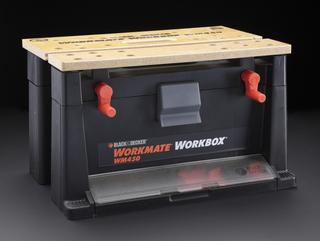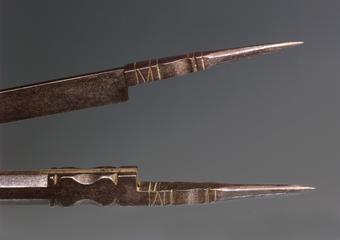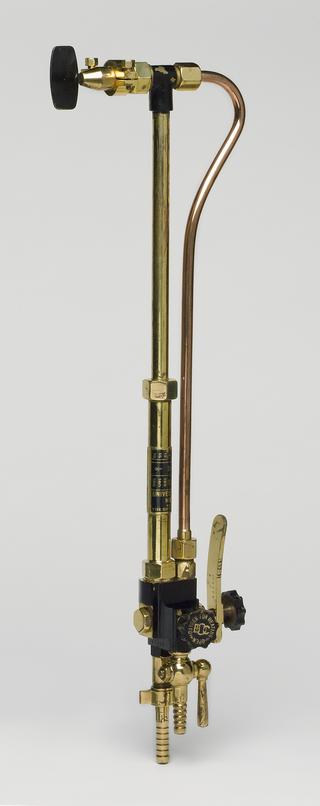Wooden turner's foot lathe, 17th or early 18th century, complete with tools and accessories
This treadle lathe was probably made in the late seventeenth century. The headstock and tailstock are secured to the wooden bearers forming the bed of the lathe by means of wooden wedges driven through slots in the uprights. The five-speed pulley on the mandrel may be driven rapidly for plain turning by means of the treadle and flywheel, which is of solid wood and provided with six grooves for the driving band. The slide-rest has a single slide the screw of which has the same pitch as one of the guide screws. The screw carries a circular scale with six divisions.
The nose end of the mandrel runs in a cylindrical collar and the pointed back end is supported in a hollowed adjustable centre. When roseturning the collar is released by removing a locking screw so that it is free to swing about a pivot in the headstock. The mandrel carries a group of ten rosettes, any one of which may be made to press against a rubber, which may be fixed anywhere along a bar running parallel with the mandrel. The rosette is kept pressed against the rubber by means of a spring which is connected with the collar by a cord. As the spring is placed for convenience at the back of the lathe, the cord passes over a small pulley on the headstock so that the collar is pulled forwards. The tension is adjustable in five steps. A stationary tool applied to the work will thus cut a wavy line. For rose-turning the mandrel is rotated slowly by means of a winch-driven pulley attached to the front of the lathe bed. A rosette fitted at the nose end of the mandrel has waves on the face in addition to those on the edge. Five guide-screws of different-pitch are cut on the rear portion of the mandrel. Below each of them is a wooden bearing which has the corresponding thread impressed upon it, so that it may be used as a screw key. If one of these keys is raised, by inserting a wedge below it, to support the mandrel, the latter advances as it rotates, so that a screw-cutting tool of the same pitch held against the work mounted in the chuck will cut a screw. This is the oldest method of cutting screws in the lathe.
The equipment of the lathe includes a hand rest, two poppet heads, sliderest tools, turning tools and chasers. There are also an eccentric chuck and an oval chuck which are probably of later date.






